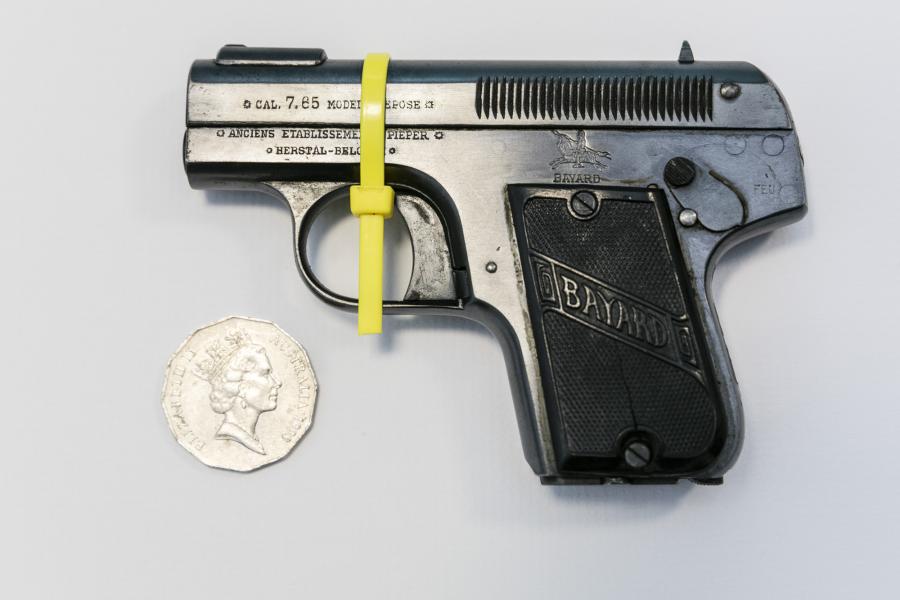A rare First World War gun, a secret compartment, and a remarkable story of survival

The Jones family had heard the stories of how their grandfather had cheated death when a German soldier’s pistol misfired during the First World War, but they never expected to find the actual gun hidden in a secret compartment in an old workbench.
The rare Bayard 1908 pistol, which lay hidden for almost 100 years and was found by accident during a move, was handed in to Nowra police and has since been donated to the Australian War Memorial.
As an x-ray technician with the 2nd Casualty Clearing Station in France, Sergeant William Henry Jones was out after a battle checking bodies and looking for wounded when he turned over a German soldier.
“The German soldier had the gun in his hand and pulled the trigger, but the gun misfired,” Jones’ grandson said.
“The soldier next to Grandad bayoneted the German and took the gun off him and gave it to Grandad and said, ‘This is really lucky, you should keep this.’
“So Grandad kept the gun, and he took the bullet out of the chamber … For the rest of his life he carried the bullet around in his top pocket, and he was buried with the bullet in his top pocket.”
The gun, however, remained hidden and forgotten in his workbench for almost a century, only adding to the remarkable story.
“My father knew the story of the gun,” Jones’ grandson said. “But he’d never seen the gun and he was never shown the gun. He didn’t think the gun existed at all. He thought his mother had given it away.”
Jones’ grandson was packing up his parents’ house and moving everything to Nowra when the truck went over a railway line near Bowral and he made the chance discovery.
“The whole load jumped and I found some bullets, and I was like, ‘Why are there bullets?’ he said.
“We’d already found a .45-calibre gun that was his army issue … but these were different size bullets, so we thought we’d better look a bit harder, and that’s when we found it in this secret compartment.”
The gun was handed in to Nowra Police Station, while officers from Shoalhaven Local Command worked with the family to arrange the donation to the Memorial.
The family said Jones had signed up at the start of the war and was “a pretty colourful character”. He played the violin and was a keen photographer who was instrumental in improving how x-rays of wounded soldiers were produced during the war.
“His commander of the 2nd Casualty Clearing Station was an English colonel, and grandad came up with this idea … instead of printing the x-ray, they came up with a language that you would just draw on the skin, so the surgeon could say, ‘Oh, okay, the shrapnel’s in this direction, or it’s here, or it’s there.’ And if it was right next to something that was very dangerous, they would take an x-ray.
“It increased the efficiency of the hospital by 70 times, which saved a lot of lives. The colonel, after the war, was awarded a knighthood and, in his memoirs, he said that all he ever did was follow the orders of Sergeant Jones. He must have had a good sense of humour, too.”